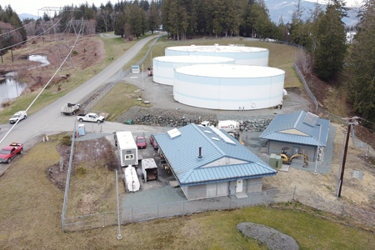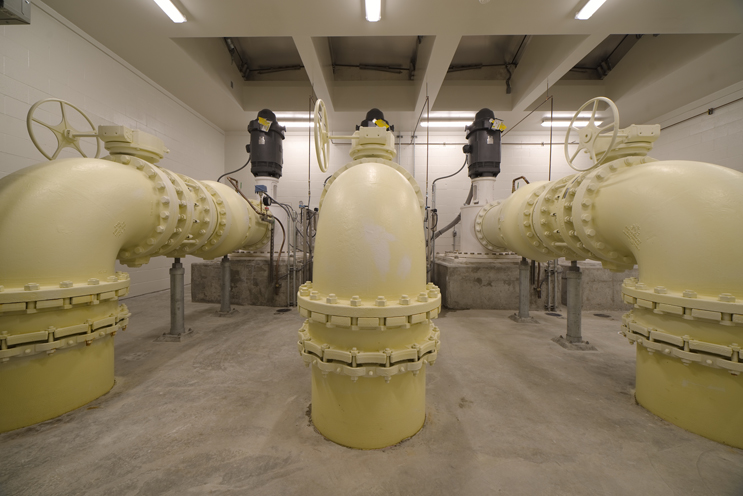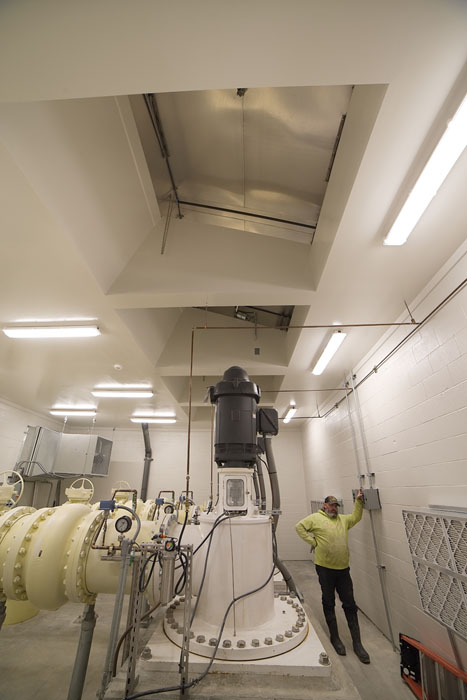New Pumping Station In Washington Provides Continuous Water Service
By Thomas Renner

Times have changed in Washington state’s Skagit County, perched just 25 miles south of the Canadian border. Skagit County, which extends across 1,920 square miles, maintains one of the largest and most diverse agricultural communities west of the Cascade mountain range. Over 90 different crops are grown in this fertile valley, including blueberries, raspberries, strawberries, tulips, daffodils, pickling cucumbers, and specialty potatoes.
The area has seen its population increase dramatically since the Skagit Public Utility District first purchased private water systems in 1936 to develop an extensive water system serving the valley. At that time, the county’s population stood at slightly more than 35,000. By 1990, it had more than doubled, reaching almost 80,000 people. The following two decades brought further growth, with residents numbering more than 130,000 by 2021.
As the population grew, it increased pressure on the region’s infrastructure services, such as water utilities. Earlier this year, Skagit PUD celebrated the completion of the new Judy Reservoir raw water pump station. The $3.2 million project included a new 1,900 square foot pump station, water main piping, a new vault, utility installation, and reconstruction of the existing rockery.
Skagit PUD History
Today, about 85,000 people in Skagit County rely on water from the Judy Reservoir. Named after L.B. Judy, the utility’s first general manager, the reservoir is integral to a sophisticated water supply system.
Formed in 1936, Skagit purchased private water systems that served the cities of Mount Vernon, Burlington, and Sedro-Woolley. The PUD consolidated them into an extensive water system serving the entire valley.
Initially, each city maintained its water filtration facility. Over time, the PUD replaced the aging filter plants with new wells near the Skagit River and eventually with the Judy Reservoir.
In 1947, the PUD began diverting water from streams in the Cultus Mountain watershed to the reservoir, which quickly became the region’s primary water supply. The PUD also constructed a storage and treatment facility to deliver chlorinated water through 11 miles of transmission lines. In 1990, the PUD built a new filtration plant that supplies 10 million gallons per day of safe, clean, reliable water to customers. The plant features direct filtration and chlorine dioxide treatment followed by chlorination before distribution.
Valve Dilemma
In Fall 2020, Skagit PUD’s commissioners authorized the construction of the new raw water pump station at Judy Reservoir to help solve maintenance issues that impacted customer service.
Workers could not service pumps in the previous pump station without shutting down the treatment plant where the water is filtrated. “When we shut down the plant, some customers would lose water,’’ said Brandt Barnes, Skagit PUD’s construction manager.
The new building allows workers to access the pumps and valves for maintenance. The three 200-horsepower pumps can deliver up to 9,000 gallons of water per minute. More importantly, workers do not have to shut off water to customers with the new easy access to the valves.

“It’s a much more effective and efficient solution,’’ Barnes said. “The raw water pumps need to be maintained regularly. We can extend the service life of the valves and not interrupt customers every time we need to work on a pump.”
The ability to adjust valves and water delivery was the project’s cornerstone. The variable frequency drive (VFD) allows the pumps to run at different revolutions per minute, reducing energy usage and enhancing efficiency.
“We’re not wasting energy throttling back on the discharge valve,’’ Barnes said. “A lot of pumps are constant-speed. When they operate, they supply whatever the pump can generate. Now we can dial the VFDs up and down to get the necessary flows.”
The project went up for bid in September 2020 and began shortly after that with site work. The pump station was completed in February 2022.
Accessing Pumps
One of the challenges teams faced in construction included the installation of roof hatches. The hatches, manufactured by The BILCO Company, allow workers to remove the pumps when they need replacement.
Two motorized roof hatches, 12 feet by 6 feet 5 inches, were custom-made by BILCO for the project. Anderson Specialties procured the hatches for McClure and Sons, which built the pumping station.
“Because of the unique size and the distance between pumps, it was challenging to get the hatches installed,’’ Barnes said. “At first, we couldn’t meet the truss opening. We had to double up the opening size. Installing motorized hatches instead of a hand crank was a good solution.”

BILCO, the manufacturer of specialty access products, makes hatches of various sizes to allow for equipment access. “We looked at other manufacturers, but we all worked hard at coming up with a good solution,’’ Barnes said.
Keep On Running
For water customers and Skagit PUD, the most critical part of the project was maintaining operations without shutting down the pump station. Inconvenience to residents aside, the PUD also wanted a station that operated more efficiently and required less maintenance.
“The major component to this project was being able to service pumps without having to shut down the treatment plant,’’ Barnes said. “The pump station we have now is much more efficient and maintenance-friendly. And that was the primary objective.”
Thomas Renner writes on construction, engineering, architecture, and other trade industry topics for publications throughout the United States.
